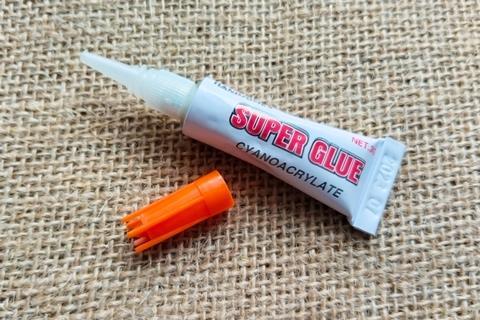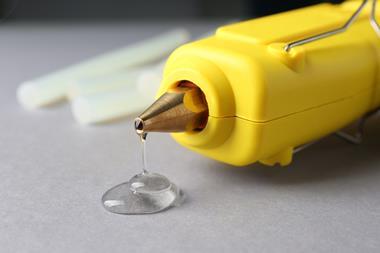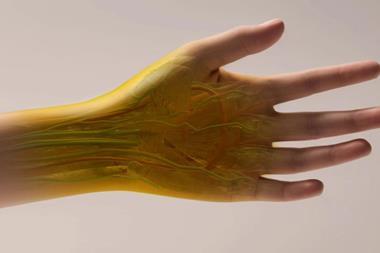Sustainable, non-toxic polymers that set in seconds could be used to seal wounds inside the human body during surgery, researchers in the US believe. The materials, which can be produced from renewable resources and readily recycled, could potentially have broader uses as adhesives in everything from sticky notes to load-bearing structural materials.

α-lipoic acid is produced by many plants and animals, and it has been documented undergoing ring-opening polymerisation reactions. In theory, this could provide a renewable source for non-toxic polymers. Unfortunately, the resulting polymers have been prone to spontaneous depolymerisation. Researchers have sought to stabilise poly(α-lipoic acid) sufficiently to form useful materials, but success has been limited by an active radical at the end of the chain.
Phillip Messersmith and colleagues at the University of California, Berkeley reasoned that incorporating an electrophile would reduce the reactivity of this radical and stabilise the polymer. In the new work, they produced two N-hydroxy succinimide esters of α-lipoic acid and dissolved them in ethanol with α-lipoic acid itself. When added to water, this formed a stable, elastomeric, self-healing adhesive polymer within seconds.
The researchers tested this material as a tissue adhesive. The current medical adhesive of choice is usually cyanoacrylate, better known as superglue, but this is unsuitable for closing internal surgical cuts as it is slightly cytotoxic, brittle and slow to decompose. The researchers tested their material for preventing rupture of the amniotic sac of mice when punctured, as is sometimes required for repairing foetal abnormalities. The researchers found that, when they punctured amniotic sacs through patches in their polymer, the patches self-healed around the puncture site and all the foetuses survived to term. Foetuses whose sacs were simply punctured all died. ‘We are actively pursuing other uses for this polymer as a surgical adhesive in my academic lab and in a startup company we have formed to move this towards commercial use,’ says Messersmith.
The researchers also showed that their material, once cured, formed a pressure-sensitive visco-elastic polymer that could be used in adhesive tapes and sticky notes. Unlike other adhesives used for the purpose, the poly(α-lipoic acid)-based adhesive worked almost as well when wet as when dry. Moreover, when the researchers added a divalent salt of α-lipoic acid to the monomer, the polymer became a rigid, crosslinked thermoset at least as strong as industrial epoxies. The material could be depolymerised, however, simply by heating in alkali.
Messersmith acknowledges that large-scale industrial use will require more widely available and cheap renewable α-lipoic acid, but he notes that ‘many decades ago styrene was considered an exotic monomer’.
Biomedical engineer Mark Grinstaff at Boston University in the US is impressed. ‘What’s really unique about this paper is that there’s this system that’s been known to polymerise for some time, but it wasn’t very useful,’ he says. ‘What Messersmith was able to do was to identify critical aspects of its chemical structure, to make changes to it such that it is now able to be polymerised, be processed and used as a functional material, but still retain the degradation properties.’ He predicts that the biggest impact will be in medicine. ‘The recycling aspects will become important if this really gets scaled up and starts to become a widely used consumer product,’ he says.
References
S Pal et al, Science, 2024, 385, 877 (DOI: 10.1126/science.ado6292)

















No comments yet